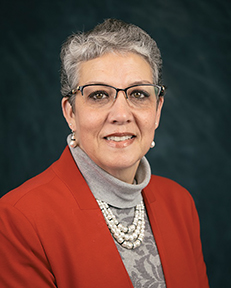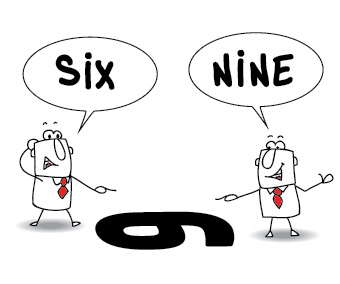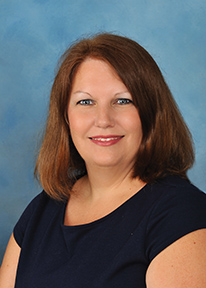A nursing career can be full of joy and satisfaction—it’s a chance to make a difference and positively impact people’s lives—but its many responsibilities can also make the job demanding, fast paced and stressful. While riding the various tides of change currently making waves across the healthcare industry, nurses also simultaneously face a learning curve when it comes to new devices, medications and technology.
Though problem-solving and juggling an array of tasks is standard for nurses, a relatively new strategy is being utilized in healthcare organizations that could help build in more short- and long-term success for nursing teams: cognitive diversity.
A 2017 article from the Harvard Business Review defines cognitive, or functional, diversity as the “differences in perspective or information processing styles.” Think of cognitive diversity as a step above diversity related to gender, age, ethnicity or religion. Invisible but present everywhere, cognitive diversity is squarely focused on how individuals think about and engage with situations that are uncertain, complex and new.

Angie Mitchell, RN, former AVP of physician services at HealthTrust, says that the topic of workplace diversity has historically been studied through physical traits such as age and gender. “While there’s no question that those traditional diversity markers go into the makeup of who we are, cognitive diversity views it from a psychological perspective, including how you look at a situation, consider your past experiences and how you process them to reach a resolution,” she says.
One example Mitchell uses when explaining cognitive diversity is to show a drawing of the number six lying on its side. (See illustration.) One man stands to the left of the number and another to the right. Because of their difference in perspective, the man on the left sees a six while the man on the right sees a nine. 
“Neither one is wrong,” Mitchell explains. “That’s why I constantly remind people that just because somebody sees or does something differently doesn’t necessarily mean it’s wrong—it’s just different.”
As healthcare organizations and leaders focus on long-term strategies to build and sustain a workforce for the future, cognitive diversity could prove instrumental in successfully addressing the nation’s nursing shortage and in managing nurses who span generations.
Combating the Nursing Shortage

Before she became chief nursing officer of HealthTrust Workforce Solutions, Shaun McCamant, MSN, RN, worked as a nurse at HCA for 18 years. Though managing 24,000+ nurses is different than her days working at the patient bedside, she clearly remembers the strain nurses face.
“Nurses can burn out fairly quickly because they have so much to do and give 100 percent every day. We’re trying to ensure they know their voice is heard,” McCamant says. “That’s why we’re looking at innovative ways not only to recruit nurses into the field, but also get them to stay with us as they continue to learn and grow.”
Recruiting new nurses and retaining experienced nurses is a pain point for healthcare systems across the country. The issue will only worsen as baby boomers require more care in the coming years and nurses prematurely retire at rapid rates.
The United States currently has about 3 million registered nurses (RNs); the American Nurses Association estimates that the country will need to produce more than 1 million new RNs by 2022 to fulfill its healthcare needs. Because today’s population of nurses over the age of 50 is growing and it is becoming more difficult to bring in new career nurses, the shortage of nurses is worsening. McCamant adds that it also costs about $40,000 every time a nurse leaves her job, not to mention the stress and burden it places on other staff members.
With such a high demand for nurses, hospital leadership that harnesses teamwork-building strategies through the lens of cognitive diversity could find new talent and keep the skilled nurses they already have.
How well a person thinks and reacts and how quickly they make decisions, particularly in stressful situations, is crucial to the field of nursing, McCamant explains. “We want to attract more people into this career, while also finding more ways to bring value to our nurses’ shifts. If we can reinforce the positive, then it can remove a lot of their stress.”
One way HealthTrust Workforce Solutions hopes to inspire lifelong nursing careers is through a cognitive and skill assessment called Prophecy. “After nurses are hired, this information offers insights into how individuals learn best and how they manage stress. It can also be used to better utilize their strengths and help them succeed,” McCamant says.
McCamant and Mitchell agree that this cognitive diversity-inspired strategy can boost efficiency and job satisfaction, whether those nurses are recent graduates or have been working at patient bedsides over the past 40 years.
“We’ve got to find a way for team members to find meaning in their work,” Mitchell says. “That’s part of what leads to recruitment and retention successes in the field of nursing.”
Better Together
Cognitive diversity can also produce better workplace outcomes. Different personalities manage problems uniquely, but 2018 research by Deloitte argues that it’s a good thing since cognitive diversity can enhance innovation by 20 percent, reduce risk by 30 percent and ease implementation once decisions are made. Similarly, the same study contended that cognitive diversity, when balanced alongside identity diversity, could drive superior business outcomes.
Mitchell says that establishing a shared language among nurse team members can enhance the performance of the entire team, and also avoid unnecessary role conflicts.
“Understanding how different nurses process or seek new knowledge and skills is a key factor in reaching a resolution that’s efficient and effective,” she says. “Usually individuals tend to side with other like-minded folks or default to the expertise of a supervisor. With cognitive diversity, nurses find a way, using their shared language, to quickly assess a situation, consider different suggestions or recommendations, and develop a solution or resolution from there.”
A prime example of cognitive diversity in action came recently when HCA implemented a new charting system for nursing.
“Many of our nurses had muscle memory for how they would document this and that, so we had to go in and retrain their brains,” McCamant explains. “And even though this was ultimately a positive change, it was still a challenge, so we were very purposeful in asking for nurses’ input, emphasizing what was going to be different and what the rollout would look like.”
After the charting platform upgrade, a team from HealthTrust Workforce Solutions went to nursing councils and teams to ask questions like: How did the process go? What could we have done better? How does this affect you?
“Nursing councils allow us to look at our nurses across the continuum, because each unit is its own individual family, and some units work best when they function differently than others,” McCamant says. “Using the information will inform our future work and help us continue to perform better by taking their shared perspectives into account.”
Applying cognitive diversity strategies has the potential to help a hospital stabilize both its current and future workforce, as healthcare systems struggle to deal with the nationwide nursing shortage and as nursing teams confront learning differences among nurses who span generations.
“At the end of the day, happy nurses inspire happy physicians and patients,” McCamant says. “Teams that work well together create a community where people want to come to work with you, and that’s a wonderful thing.”
Share Email Operations, Q4 2018, Staffing





